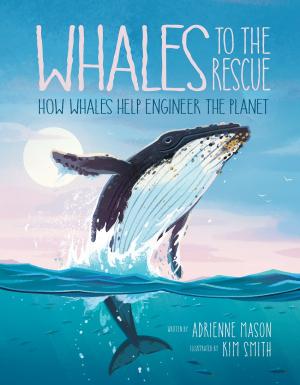
Whales to the Rescue: How Whales Help Engineer the Planet
Whales are vital ecosystem engineers, playing an important role in maintaining a healthy ocean and influencing the atmosphere as they swim, dive, eat and even poop. Whales to the Rescue: How Whales Help Engineer the Planet presents scientific information in easy-to-understand chapters, complete with captivating pictures, diagrams and text boxes.
To give readers a sense of the size of these magnificent creatures, author Adrienne Mason uses vivid similes to describe whale species, such as “its tongue is as heavy as two hippos.” The book explains the different components of a whale’s food chain and how the process of photosynthesis is involved. In a subsequent chapter, it examines a study that shows how disturbances in one part of the food chain affect the entire ecosystem.
The author shares how Indigenous Peoples who live on the world’s coastlines traditionally harvested whales for survival, and that some still do in their communities today. Mason points out, however, that commercial whalers from Europe and America hunted whales aggressively from the 1800s until the end of the 1960s, endangering whales to feed pets; make umbrellas, hoop skirts and brushes; and to extract oil for various products. Thankfully, some whale populations are recovering.
The book helps readers understand the carbon cycle. Whales, like all living creatures, contain carbon, the building blocks of life. Massive carbon-filled whales help make Earth a livable planet. More whales means more poop, which leads to more phytoplankton, more carbon in the ocean, and less carbon in the atmosphere.
Whales to the Rescue delivers a message that we should protect our oceans to ensure whales can thrive. Their existence is interconnected to all life, and this book makes connections between the impact of climate change on biodiversity and how protecting it can have a positive effect.
A resource section provides ways individuals can contribute to environmental protection and website links to learn more, along with a helpful glossary. This is a great non-fiction book to add to your Junior-Intermediate science book collection.
Amanda Anderson is a member of the Bluewater and Upper Grand Occasional Teacher Locals.